#sullivan´s travels 1941
Text

Veronica Lake on the set of Sullivan’s Travels (1941)
2 notes
·
View notes
Text
CC’s Top 10 New Watch Ranking - November 2022

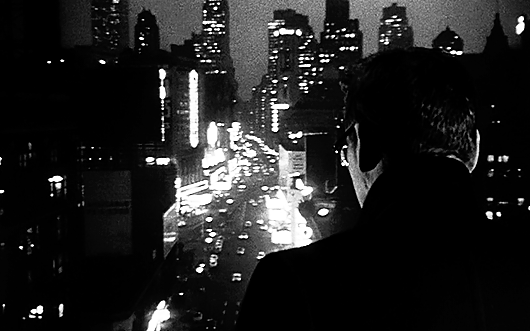

It’s an exciting day for movie lists! The Sight & Sound Top 100 has dropped, everyone’s pouring over the details, and I thought I’d share my own equally famous and important list. Not my personal Sight and Sound - I’ve only seen 45% of this decade’s S&S, so am woefully underinformed to make such a judgement. But, whatever I’ve seen in the last 30 days? That I can do.
Every month on Letterboxd, I make a list of the 10 best films I’ve seen for the first time. It’s a fun way to compare movies separated in time, country of origin, and genre, and helps me keep track of what I’m watching! The accidental theme of this month has been Journeys Into Underground Worlds, whether that’s crime, cults, or supernatural realms!
Click below to see the breakdown! Click here for the list on LB!
#10 - Lair of the White Worm
1988. Director: Ken Russell

A pulpy, erotically charged horror movie starring a baby-faced Hugh Grant and Peter Capaldi. Amanda Donohoe is a centuries-old priestess of a snake god that needs human sacrifices, and frankly, I volunteer as tribute. This embodies all the things I like most about high camp horror - a thin plot, corn-syrup gore, a practical effects monster, and visually striking low-budget dreamscapes. The vision shown in this gif is an incredible high point of the film, just absurd 80′s video editing using all its tricks. Recommended for anyone who loves Evil Dead 2 or the scarier episodes of Doctor Who.
#9 - Sullivan’s Travels
1941. Director: Preston Sturges
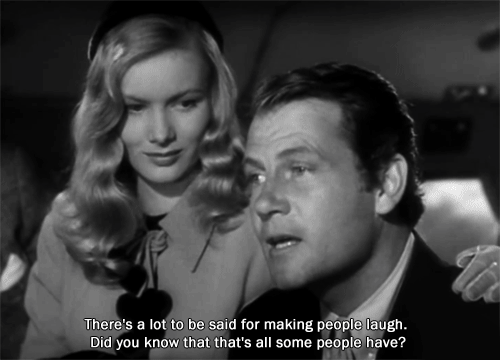
An out-of-touch movie director pretends to be homeless to make his next film more ‘real,’ while the studio sends a crew to follow him to make sure he doesn’t get into trouble. He ditches them, and experiences the true injustice and harm that he had been fantasizing about all along. Like that director this movie feels out of touch for much of its run time, until the last act when the main character faces some *really real* injustice at the hands of the carceral system. That’s what elevates this from a mild comedy into something really special. A parody of a studio system that barely exists anymore - imagine executives shaking a writer down, begging to pay him - but still feels relevant in the way that some people can simply stop existing if they’re handed over to the uncaring police state.
#8 - Out of the Fog
1941. Director: Anatole Litvak

A noir-tinged parable about how fascist bullies can take control of your lives if you don’t stop them. Two immigrant Brooklynites dream of buying a fishing boat and sailing to Cuba, but a racketeer shakes them down at the pier for ‘protection money,’ threatening the life of one of their daughters, who has fallen for his strongarmed charm. This war-time film was an argument by the director in favor of the US entering WWII, showing how the threat of fascism wasn’t just a European problem. Anyone, anywhere, is susceptible to a thick-fisted jerk who sells dreams of power to the weak, and an ever-escalating use of violence to take everything from people who just want to keep their heads down. Incredible for its ending, where - spoilers - the two men effectively murder the racketeer, and everyone they know agree to bury the crime because they know he’s better off dead. Talk about community action!
#7 - Doctor Sleep
2019. Director: Mike Flanagan

I loved Midnight Mass so much, so was excited when my favorite movie podcast gave me an excuse to watch this film. I rewatched The Shining last month as part of a Kubrick filmography run, so my mind was primed for everything this movie had to offer. Though a sequel to The Shining feels unnecessary on paper, Flanagan managed to find wonderful new layers to explore in the original film’s premise, marrying Kubrick’s nightmarish reality with King’s original intention for the work. What is the responsibility of traumatized people? In a cruel world, do you keep perpetuating harm, do you run away and numb yourself, or do you - miraculously, heroically - find a way to end the cycles of violence wherever you can? Incredible performances all around. Rebecca Ferguson is also in this month’s micro-theme of Very Evil Women Are Allowed To Kill Me. I can’t wait to see what Kyliegh Curran does with the rest of her career.
#6 - Brute Force
1947. Director: Jules Dassin

A movie that feels like The Shawshank Redemption until its brutal, tragic end. A demonstration of the banality of the prison system and how it is a breeding ground for pain and arbitrary violence. I thought a lot about Andor while watching this - both are examples of a collective forming a rebellion. Both have tragic ends for some of their central characters, but give a feeling of hope that success and victory are possible. That the revolution will win out. Andor is the inception of a revolution that we know will win - the Force will indeed awaken - but Brute Force leaves an air of melancholy as you recognize that the struggle these prisoners face is something we’re still dealing with today. The system has only gotten crueler since this movie was made. But that doesn’t mean it can’t be changed.
#5 - Eyes Wide Shut
1999. Director: Stanley Kubrick
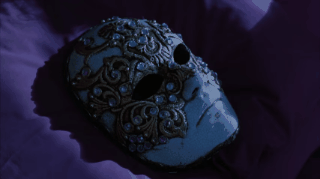
A movie I’ve often wondered and fantasized about because of its raunchy, taboo reputation. It really moves me how a film with so much sex and erotic content can ultimately leave the viewer feeling drained of any sensuality. From my LB review: “Queerness can't just be a mission to conform 'outsiders' to the mainstream. It must destroy the thing that controls us all! I'm so interested in the way the masked orgy-goers kiss - an imitation of intimacy without connection, without the actual nerve-tingling *sensation* of locking lips. Their secrecy, immovable and grand, must be maintained above all else. Pleasure must be obtained through this barrier that conceals the self. God, the straights have it bad. Even in their most elaborate fantasies they just can't let go. They've always got to look over their shoulder, in case someone realizes they're just as perverted and human as the rest.”
#4 - Michael Clayton
2007. Director: Tony Gilroy
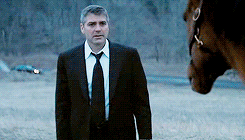
Another film that’s been on my list for a long time! With Tony Gilroy proving himself a genius in the TV sphere, like Mike Flanagan, I wanted to turn to one of his films to see what he’s got there. This didn’t disappoint. Michael Clayton is a seedy corporate fixer sent to save a huge case from being ruined by the lead attorney, whose doubts are arising out of a psychotic breakdown. It’s just fucking *fun.* Someone in the group I was watching this with said that Gilroy nails the perfect balance between effective and flowery dialogue. His characters ramble, speaking outside any sort of naturalism, but it never feels stagey. They’re people stuck in grand, outlandish circumstances, and their speech rises up to match the stakes of their surroundings. This movie has one of the most satisfying endings in movie history. I adore the end credits that just track on Clooney’s face - it’s a great demonstration of what a good actor he is. You can see everything he’s thinking in the small motions of his eyes.
#3 - Glass Onion: A Knives Out Mystery
2022. Director: Rian Johnson

Benoit Blanc is back, baybeee! I love a good whodunnit, and Rian Johnson is proving himself to be the master of this genre in the modern age. Knives Out is one of my favorite movies, and I’m pleased to report that the latest entry in this series is just as satisfying as the first. I want Johnson to make as many of these as he wants, forever. My movie circle has made a lot of noise about the things this film has repeated from the original. I think 2 films is too early to say what the pattern for “A Knives Out Mystery” is going to be, but I hope the essence stays the same. An incredible cast, a colorful setting, and the relatively blank character of Benoit Blanc taking a backseat to let the ensemble shine. Oh, and the hyper-wealthy suffering under the weight of their own greed! That’s good, too. I’ve read about 35 Agatha Christie novels this year, and Johnson has found some of these essential ingredients that made her works so compelling, too.
#2 - Sweet Smell of Success
1957. Director: Alexander Mackendrick

If there were an award for ‘Most One-Liners In A Motion Picture,’ this one would win, hands-down. I watched this while visiting my dad, who is a kind of passive movie fan and not often interested in films this old - but after just a few minutes of dialogue, he sat down and got sucked in. Sidney Falco is a press agent looking to score big by sucking up to J. J. Hunsecker, a manipulative narcissist who runs the biggest column in town. All Sidney has to do is break up the relationship JJ’s sister is striking up with a jazz guitarist. Through the glamor, glitz, and grime of late 50′s Broadway, this spirals into an immensely satisfying tale of ruthless ambition. The writing is phenomenal, the essence of New York is captured like nothing else, and JJ proves to be one of cinema’s most memorable villains. You can jump to any point in this movie and get one of the zingiest lines you’ve ever heard. A personal favorite: “If you’re funny, Walter, I’m a pretzel!”
#1 - Labyrinth
1986. Director: Jim Henson

Somehow I had never seen this???? I can’t believe it either. The composite ingredients of this work - the fantasy, escapism, puppetry, fairy lore, danger, design - are all things I have loved from a very early age, and this *feels* like something I would have loved as a kid. Maybe that’s the power of this work - it speaks to a childish part of us that yearns to escape into fantasy, that wants to make cruel oaths to those we love, but knows the epic consequences of what would happen if we did. The journey we would have to go on to repair the hurt caused. I was lucky enough to go to the Henson exhibit at the Museum of the Moving Image last month and saw some of these costumes in person. They are so richly designed. Every last inch of this frame is dripping with precision, from the fish-eyed lens to the mixed fabrics that makes each puppet come to life. Just like fantasy drawings often use inks, charcoals, and paints to create a textured image, these puppets are made from a variety of fabrics, metals, and other materials to make them seem organic and real. It’s an incredible feat. Jennifer Connelly embodies such a precise moment of youth, too. The very first steps out of childhood and into the passionate teenage years, where all the consequences of your actions seem massive and the weight of responsibility is dawning. This is a truly unique dreamworld. How lucky we are to have had a visionary like Henson create something like this.
~~~~~~~~~~~~~~~~~
Thank you for reading! If you liked any of these thoughts feel free to follow me on Letterboxd, where I post reviews and keep meticulous track of every movie I watch. Look forward to more posts like these next month!
#CC OC#Letterboxd#New Watch Ranking#movies#film#labyrinth#sweet smell of success#Glass Onion#Michael Clayton#Eyes Wide Shut#Brute Force#Doctor Sleep#Out of the Fog#Sullivan's Travels#The Lair of the White Worm#text#monthly ranking#list
12 notes
·
View notes
Text
Favorite first watches - Jan 2024
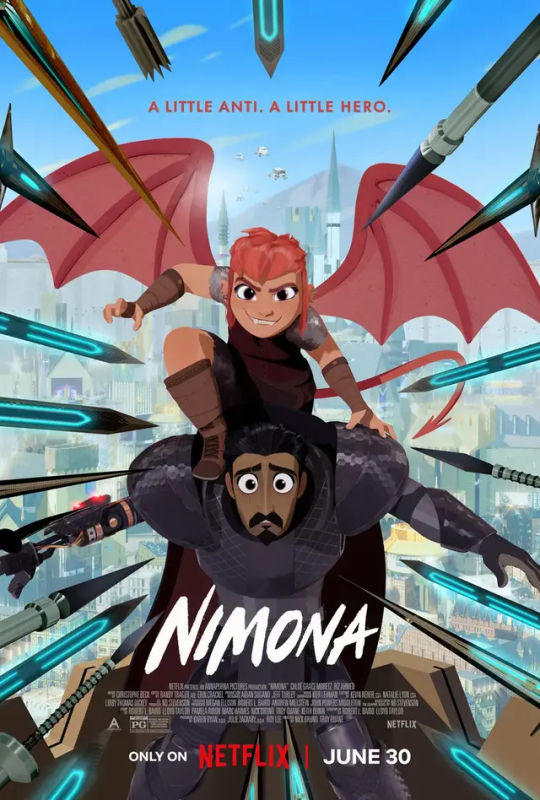





Nimona (2023)
I am Cuba (1964)
Sullivan's Travels (1941)
The Hellbenders (1967)
Powwow Highway (1989)
V/H/S/85 (2023)
Honorable mention: Mammoth (2006). Wonderfully self aware and quite entertaining !
0 notes
Photo
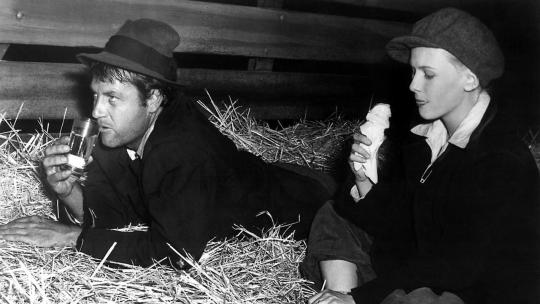
Acabei de assistir a Sullivan's Travels (1941).
0 notes
Text
Best Movie Year Ever: How 1999 Blew Up the Big Screen by Brian Raftery
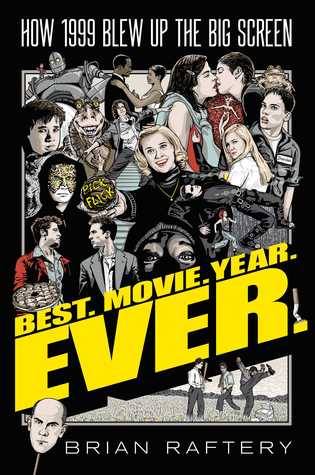
https://books.google.com/books/about/Best_Movie_Year_Ever.html?id=iDxqDwAAQBAJ
1939 is often called the greatest year in cinema for the dual release in of The Wizard of Oz and Gone with the Wind (Although 1941 would give 1939 a run for it’s money). Author Brian Raftery tries to do a similar version for the year 1999 in his book, Best Movie Year Ever: How 1999 Blew Up the Big Screen.
With 31 movies in 17 chapters, Raftery highlights the making of these movies. Each chapter is either a movement (black films), a single film (The Matrix), or a common theme (George Clooney movies). There isn’t really any information or reason why these movies made the year 1999 triumph over any other year, especially compared to say 2007 which many people declare the same great of movies.
Interesting to note is how despite the glowing praise and reviews that almost all the films in this book have, many have gone to the waist side. Films such as Star Wars Episode I, which is not a good film, earns an entry here, and also yet, is more relevant and influential than most of the films included. It blows away Election in terms of anything but ‘high art’ status and nobody cares about the Iron Giant even today. This is what Raftery seems to confuse in his book. Good well reviewed films DOES NOT EQUAL greatest film year or even influential. One only has to look at the Academy Awards’ last couple of decades to see the lack of Best Picture winners and their impact or even the laughing stock highest grossing movie of all time 2009′s Avatar and the lack of change it had for anything (besides James Cameron’s bank account).
Even look at the above example I give; 1939 had those two films but what else? There was Goodbye Mr. Chips, The Private Lives of Elizabeth and Essex, Dodge City, and one of those was in color too. Young Mr. Lincoln, Stagecoach, Rules of the Game, The Roaring Twenties are really the only critical movies to have any relevance today. Compared to 1941 there was Dumbo, The Maltese Falcon, Sergent York, The Wolf Man, Sullivan’s Travels, How Green Was My Valley, The Devil and Miss Jones, and of course Citizen Kane.
Sorry about the film nerd rant but I feel that this is the book’s biggest flaw. It confuses good for influential as that is the reason most of the films discussed are included. There are very light touches of social influence and issues discussed but when the Star Wars chapter is longer than the black film section that Raftery attempts to show occurred, then we see where the book primary wants to focus.
The most honest part of the book is the opening prologue. Raftery writes on the state of the film industry during Y2K. He also includes behind the scenes of Hollywood with Brad Pitt and the cast of Fight Club in Mexico and a kidnapping that will leave readers reading on. But beyond the making of the film discussed in their respected chapters, there isn’t any sight. The lone exception is the Star Wars chapter where Raftery discusses the impact the internet had on it’s production with fan discussions and web leaks. But Raftery has to try and tie this to the then contemporary politics of 2019 Trump era, blaming the rise of Trump on these websites and users and basically tries to make an argument that this year predicted the role of the internet in today’s world, which he utterly fails at.
While the overall theory Raftery proposes collapses and it feels more like a wanna be political predication for today’s world, this book is a good read regarding the background of certain 90s movies. I will keep my copy of the book to see how the making of various movies discussed here are made. But the book is very flawed in terms of it’s thesis or social impact.
0 notes
Text
Martin Scorsese’s 125 favourite movies
The Infernal Cakewalk (1903)
Secrets of the Soul (1912)
The Four Horsemen of the Apocalypse (1921)
Nosferatu (1922)
Dr. Mabuse the Gambler (1922)
Metropolis (1927)
Napoleon (1927)
The Power and the Glory (1933)
It Happened One Night (1934)
Mr. Deeds Goes to Town (1936)
La Grande Illusion (1937)
Mr. Smith Goes to Washington (1939)
Stagecoach (1939)
The Roaring Twenties (1939)
The Rules Of The Game (1939)
Citizen Kane (1941)
How Green Was My Valley (1941)
Sullivan’s Travels (1941)
Cat People (1942)
Arsenic and Old Lace (1944)
Rome, Open City (1945)
Children Of Paradise (1945)
Duel in the Sun (1946)
Gilda (1946)
A Matter of Life and Death (1946)
Paisan (1946)
Beauty & The Beast (1946)
The Lady From Shanghai (1947)
T-Men (1947)
I Walk Alone (1947)
The Red Shoes (1948)
Germany Year Zero (1948)
Force of Evil (1948)
La Terra Trema (1948)
Macbeth (1948)
Raw Deal (1948)
Bicycle Thieves (1948)
Caught (1949)
The Third Man (1949)
Stromboli (1950)
The Flowers of St. Francis (1950)
Gun Crazy (1950)
Night and the City (1950)
An American in Paris (1951)
The River (1951)
Ace in the Hole (1951)
The Magic Box (1951)
The Bad and the Beautiful (1952)
Europa ’51 (1952)
Othello (1952)
Umberto D. (1952)
Ikiru (1952)
The Band Wagon (1953)
House of Wax (1953)
Julius Caesar (1953)
Pickup on South Street (1953)
Ugetsu (1953)
Tokyo Story (1953)
Dial M for Murder (1954)
Journey to Italy (1954)
Senso (1954)
Seven Samurai (1954)
Sansho the Bailiff (1954)
All that Heaven Allows (1955)
Kiss Me Deadly (1955)
The Searchers (1956)
Forty Guns (1957)
Sweet Smell of Success (1957)
Some Came Running (1958)
Touch of Evil (1958)
Vertigo (1958)
Ashes and Diamonds (1958)
Big Deal On Madonna Street (1958)
Shadows (1959)
The 400 Blows (1959)
Peeping Tom (1960)
Rocco and His Brothers (1960)
Shoot the Piano Player (1960)
Breathless (1960)
L’Avventura (1960)
The Hustler (1961)
One, Two, Three (1961)
Cape Fear (1962)
The Trial (1962)
Two Weeks in Another Town (1962)
Salvatore Giuliano (1962)
Il Sorpasso (1962)
America, America (1963)
Jason and the Argonauts (1963)
The Leopard (1963)
Shock Corridor (1963)
High and Low (1963)
8½ (1963)
The Fall of the Roman Empire (1964)
Band of Outsiders (1964)
Before the Revolution (1964)
The Rise of Louis XIV (1966)
Blow-Up (1966)
Weekend (1967)
Faces (1968)
2001: A Space Odyssey (1968)
Death by Hanging (1968)
Midnight Cowboy (1969)
The Butcher (1970)
M*A*S*H (1970)
The American Friend (1970)
Klute (1971)
McCabe & Mrs. Miller (1971)
The Merchant of Four Seasons (1971)
The Godfather (1972)
Aguirre, the Wrath of God (1972)
The Conversation (1974)
Ali: Fear Eats The Soul (1974)
The Enigma of Kaspar Hauser (1974)
The Messiah (1975)
Nashville (1975)
Kings of the Road (1976)
Apocalypse Now (1979)
The Marriage of Maria Braun (1979)
Health (1980)
Heaven’s Gate (1980)
Mishima (1985)
Born on the Fourth of July (1989)
Do the Right Thing (1989)
The Player (1992)
#martin scorsese#list#favourite movies#vertigo#2001 a space odyssey#heaven’s gate#apocalypse now#the godfather#klute#shock corridor#l’avventura#gun crazy#gilda#arsenic and old lace#how green was my valley#citizen kane#it happened one night#born on the fourth of july#metropolis
172 notes
·
View notes
Text
AFI Top 100:
A Couple of years ago I was perusing the AFI Top 100 Films of All-Time list as well as the 10 Years Later version of the list. There are few differences between the two so I decided to combine the two lists into one and try to watch them. I’ve taken inventory of movies on the combined list and boldened all of the films that I have already seen for certain and this is that list:
1) Citizen Kane (1941)
2) Casablanca (1942)
3) The Godfather (1972)
4) Gone with the Wind (1939)
5) Lawrence of Arabia (1962)
6) The Wizard of Oz (1939)
7) The Graduate (1967)
8) On the Waterfront (1954)
9) Schindler’s List (1993)
10) Singin’ in the Rain (1952
11) It’s a Wonderful Life (1946)
12) Sunset Boulevard (1950)
13) The Bridge Over the River Kwai (1957)
14) Some Like it Hot (1959)
15) Star Wars (1977)
16) All About Eve (1950)
17) The African Queen (1951)
18) Psycho (1960)
19) Chinatown (1974)
20) One Flew Over the Cuckoo’s Nest (1975)
21) The Grapes of Wrath (1940)
22) 2001: A Space Odyssey (1968)
23) The Maltese Falcon (1941)
24) Raging Bull (1980)
25) E.T. The Extra-Terrestrial (1982)
26) Dr. Strangelove (1964)
27) Bonnie & Clyde (1967)
28) Apocalypse Now (1979)
29) Mr. Smith Goes to Washington (1939)
30) Treasure of the Sierra Madre (1948)
31) Annie Hall (1977)
32) The Godfather Part II (1974)
33) High Noon (1952)
34) To Kill a Mockingbird (1962)
35) It Happened One Night (1934)
36) Midnight Cowboy (1962)
37) The Best Years of Our Lives (1946)
38) Double Indemnity (1944)
39) Doctor Zhivago (1965)
40) North by Northwest (1959)
41) West Side Story (1961)
42) Rear Window (1954)
43) King Kong (1933)
44) The Birth of a Nation (1915)
45) A Streetcar Named Desire (1951)
46) A Clockwork Orange (1971)
47) Taxi Driver (1976)
48) Jaws (1975)
49) Snow White & the Seven Dwarfs (1937)
50) Butch Cassidy & the Sundance Kid (1969)
51) The Philadelphia Story (1940)
52) From Here to Eternity (1953)
53) Amadeus (1984)
54) All Quiet on the Western Front (1930)
55) The Sound of Music (1965)
56) M*A*S*H (1970)
57) The Third Man (1949)
58) Fantasia (1940)
59) Rebel Without a Cause (1955)
60) Raiders of the Lost Ark (1981)
61) Vertigo (1958)
62) Tootsie (1982)
63) Stagecoach (1939)
64) Close Encounters of the Third Kind (1977)
65) The Silence of the Lambs (1991)
66) Network (1976)
67) The Manchurian Candidate (1962)
68) An American in Paris (1951)
69) Shane (1953)
70) The French Connection (1971)
71) Forrest Gump (1994)
72) Ben-Hur (1959)
73) Wuthering Heights (1939)
74) The Gold Rush (1925)
75) Dances with Wolves (1990)
76) City Lights (1931)
77) American Graffiti (1977)
78) Rocky (1976)
79) The Deer Hunter (1978)
80) The Wild Bunch (1969)
81) Modern Times (1936)
82) Giant (1956)
83) Platoon (1986)
84) Fargo (1996)
85) Duck Soup (1933)
86) Mutiny on the Bounty (1935)
87) Frankenstein (1931)
88) Easy Rider (1969)
89) Patton (1970)
90) The Jazz Singer (1927)
91) My Fair Lady (1964)
92) A Place in the Sun (1951)
93) The Apartment (1960)
94) Goodfellas (1990)
95) Pulp Fiction (1994)
96) The Searchers (1956)
97) Bringing up Baby (1938)
98) Unforgiven (1992)
99) Guess Who’s Coming to Dinner (1967)
100) Yankee Doodle Dandy (1942)
101) The General (1927)
102) Intolerance (1916)
103) The Lord of the Rings: The Fellowship of the Ring (2001)
104) Nashville (1975)
105) Sullivan’s Travels (1941)
106) Cabaret (1972)
107) Saving Private Ryan (1998)
108) The Shawshank Redemption (1994)
109) In the Heat of the Night (1967)
110) All the President’s Men (1976)
111) Spartacus (1960)
112) Sunrise (1927)
113) Titanic (1997)
114) A Night at the Opera (1935)
115) 12 Angry Men (1957)
116) The Sixth Sense (1999)
117) Swing Time (1936)
118) Sophie’s Choice (1982)
119) The Last Picture Show (1971)
120) Do the Right Thing (1989)
121) Blade Runner (1982)
122) Toy Story (1995)
84 notes
·
View notes
Photo


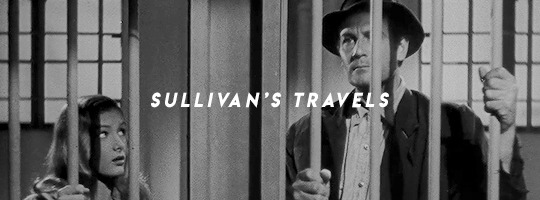

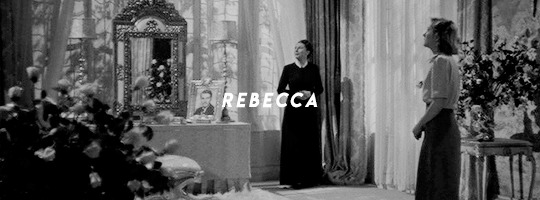


I was tagged by @glamourofyesteryear, @norashelley, and @classicfilmgemz to list seven of my comfort films. Thank you all for tagging me, and apologies for taking so long to get around to it!
I’ve already listed my top 10 comfort films in a different tag game before, so I decided to try to list seven different films in addition to the ones I named in that previous post. It was a little harder this time around since I don’t rewatch movies very often. But I came up with a list, and here it is :).
1. Sabrina (1954), dir. Billy Wilder | One of my all-time favorite films. I love the dreamy, melancholic feel of it. Makes me inexplicably wistful.
2. You’ve Got Mail (1998), dir. Nora Ephron | I think The Shop Around the Corner is a better film, but You’ve Got Mail is more of a comfort movie to me. One of my personal favorite rivals-to-lovers in film :).
3. Sullivan’s Travels (1941), dir. Preston Sturges | An absolute masterpiece and one of my favorite films of all time. I am always in awe of Sturges’ stories and how unapologetically wacky they are. His dialogue is snappy, his climaxes are always big and unexpected, and only his directorial touch could do such a smartly written script the proper justice. And as someone working towards a career in the entertainment industry, the film’s theme warms my heart and humbles me.
4. Shadow of a Doubt (1943), dir. Alfred Hitchcock | Any Teresa Wright film is a comfort movie to me because I love her, but I put Shadow of a Doubt on here, mostly because I’ve seen it more times than any of her other films. It’s also my favorite Hitchcock film, so just that combination of S-tier direction and my favorite actress is why this earns a spot on my list.
5. Rebecca (1940), dir. Alfred Hitchcock | Another one of my favorite Hitchcock films. Romance is one of my favorite genres (clearly), and I know this might sound kind of weird, but I actually really like the romance between Maxim and the second Mrs. de Winter. Plus, I love ingénue Joan Fontaine characters.
6. Willy Wonka & the Chocolate Factory (1971), dir. Mel Stuart | Very much my brand of humor. Plus, I love the music, and it’s also based off one of my favorite children’s books :).
7. Random Harvest (1942), dir. Mervyn Leroy | This movie hurts my heart.
I feel like everyone’s been tagged already lol, so I just tag anyone that wants to do it!
#personal#tag game#my edit#sabrina#you've got mail#sullivan's travels#shadow of a doubt#rebecca#willy wonka and the chocolate factory#random harvest
37 notes
·
View notes
Text
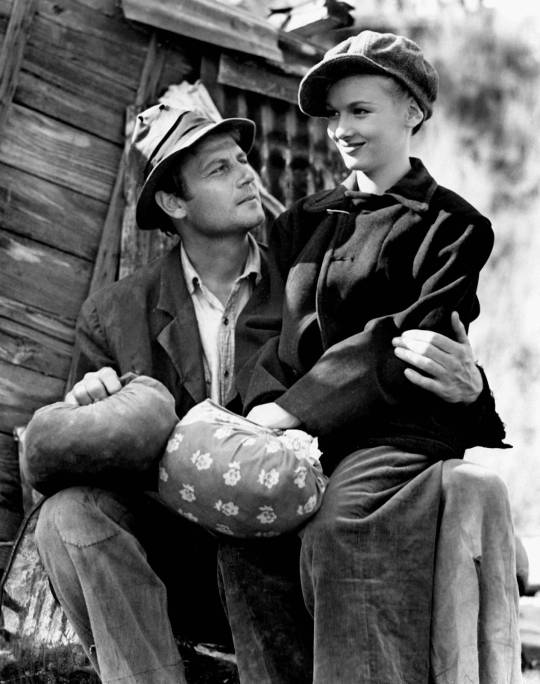
Joel McCrea-Veronica Lake "Los viajes de Sullivan" (Sullivan´s travels) 1941, de Preston Sturges.
22 notes
·
View notes
Text
We’re following #ArchivesLadiesWhoLead for this month’s Archives Hashtag Party. Here is a selection of women who used their voices and actions to make an impact during the 1970s and beyond.
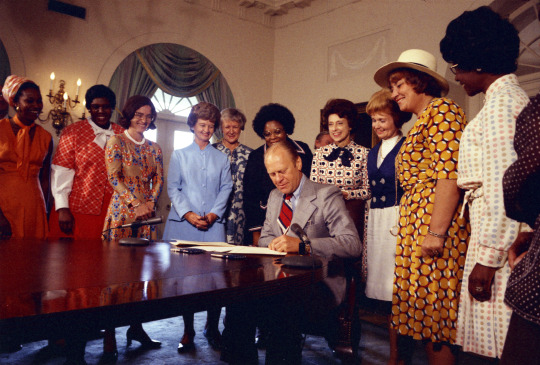
President Gerald R. Ford Signing the Proclamation on Women's Equality Day 1974 in the Cabinet Room, 8/22/1974 (National Archives Identifier 12082600)
During the 93rd Congress (1973–1975), 16 women served in the House of Representatives. All but three of them attended the signing ceremony for the Presidential proclamation on Women's Equality Day on August 22, 1974: Representatives Yvonne Brathwait Burke (D-CA), Barbara Jordan (D-TX), Elizabeth Holtzman (D-NY), Marjorie S. Holt (R-MD), Leonor K. Sullivan (D-MO), Cardiss Collins (D -IL), Corinne C. Boggs (D-LA), Margaret M. Heckler (R-MA), Bella S. Abzug (D-NY), Shirley Chisholm (D-NY), Ella T. Grasso (D-CT), Patricia Schroeder (D-CO), and Patsy T. Mink (D-HI). Those not present were Edith Green (D-OR), Martha Griffiths (D-MI), and Julia Hansen (D-OR).

Anne Armstrong Being Sworn In as Ambassador to Great Britain and Northern Ireland by Justice Lewis Powell with Her Husband Tobin Armstrong Holding the Bible in the Cabinet Room, 2/19/1976 (White House photograph A8411-21A, cropped)
Anne Armstrong quickly rose to in prominence in the Republican Party, becoming the first woman to make a keynote address at a major political convention at the Republican National Convention in 1972 in Miami Beach. The following year she was the first woman to be named Counselor to the President. Armstrong achieved another first in 1976 when she became Ambassador to the United Kingdom of Great Britain and Northern Ireland. As Ambassador, she helped oversee U.S.-U.K. relations during the Bicentennial year and dealt with other issues such as energy. She was also the first U.S. ambassador to the Court of St. James to visit Northern Ireland.

President Gerald Ford Meeting with Major General Jeanne Holm, Special Assistant for Women's Affairs, in the Oval Office, 3/8/1976 (National Archives Identifier 7336751)
On March 8, 1976, President Ford appointed Jeanne Holm, Major General USAF (Retired), as Special Assistant to the President for Women. Originally from Portland, Oregon, Holm enlisted in the armed services during World War II and later became the first woman to attend the Air Command and Staff College. She went on attain the rank of Major General in the Air Force, becoming the highest ranking woman in the Air Force and the first woman in any branch of the military to be named a two-star general. As Special Assistant, Holm served as a liaison with women’s organizations and provided the President and White House staff members with advice on legislation, regulations, and executive orders.

Madama Vijaya Lakshmi Pandit of India meeting with First Lady Betty Ford in Cleveland, Ohio, 10/25/1975 (White House Photograph A7014-18)
Madame Vijaya Lakshmi Pandit came from a prominent political family in India. She became the first woman to hold a cabinet post before the country gained independence, and after 1947 held a series of diplomatic posts as ambassador to the Soviet Union, United States, and Spain among others. During her time heading India's delegation to the United Nations (1946-1968) she also became the first female President of the UN General Assembly. Madame Pandit had lunch with Mrs. Ford before they both addressed the Greater Cleveland International Women's Year Congress on October 25, 1975.

First Lady Betty Ford greeting ballet dancer Sandra Fortune-Green and Sylvester Campbell at the White House, 6/29/1976 (White House Photograph B0404-03A)
Sandra Fortune-Green began taking ballet lessons at age 10 at the Jones-Haywood School of Dance in Washington, DC. She continued pursuing dance, studying at the School of American Ballet in New York City and becoming a principal dancer for the Capitol Ballet Company. During the 1970s Fortune-Green was considered to be the world's top black classical ballet dancer. Mrs. Ford met with her at the White House on June 29, 1976, to give her best wishes before Fortune-Green represented the U.S. at the Varna International Ballet Competition in Bulgaria, where she would earn an honorable mention.

Louise Nevelson and Betty Ford standing in front of Nevelson’s sculpture “Bicentennial Dawn” at the James A. Byrne U.S. Courthouse in Philadelphia, Pennsylvania, 1/13/1976 (White House photograph A7894-27)
Born in the Russian Empire (present-day Ukraine), Louise Nevelson and her family came to the United States in the early 1900s. She began studying art full time in the 1920s. After traveling and continuing her studies in Europe she returned to the U.S., briefly working as an assistant to Diego Rivera and later taught art under the Works Project Administration (WPA). Nevelson had her first solo exhibition in 1941. She developed a signature style of large scale, monochromatic wooden sculpture that made her one of the country’s foremost 20th century sculptors. Betty Ford joined Nevelson for the unveiling of her work “Bicentennial Dawn” at the James A. Byrne U.S. Courthouse on January 13, 1976.
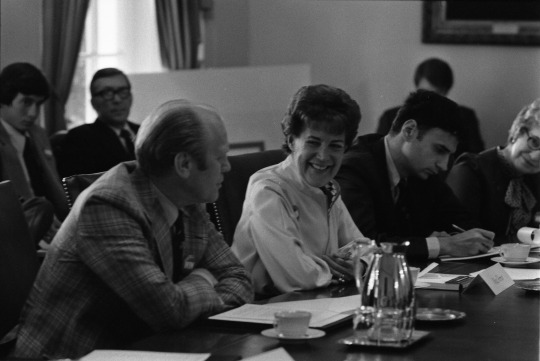
President Gerald R. Ford, Sylvia Porter, Ralph Nader, and Others at a Meeting of the Citizens Action Committee to End Inflation, 10/12/1974 (National Archives Identifier 12082668)
Sylvia Porter saw how the world had been deeply affected by the Stock Market Crash and decided to study economics and finance. In 1934 she began writing a column for The American Banker and New York Post as well as other magazines explaining finances and economic matters in plain language to her readers. Readers did not discover that “S.F. Porter” was a woman until 1942, and she is considered the first woman to hold such a position. Throughout her life, Porter continued writing and also hosted a radio show. In 1974, when President Ford was dealing with an inflation crisis, Porter chaired and helped organize the Citizens Action Committee to Fight Inflation (CAC). This voluntary citizens program would provide the American people with an opportunity to get actively involved in the fight against inflation.

ABC Correspondent Barbara Walters Interviewing President Gerald R. Ford and First Lady Betty Ford in the White House Residence, 12/4/1976 (National Archives Identifier 12007074)
Beginning her career in 1962 as a segment producer for Today, Barbara Walters eventually became the co-host of the popular morning show and the first woman to hold that title on a nationally televised news program. She went on to become the co-anchor of the ABC Nightly News opposite Harry Reasoner and the co-anchor of the long running news program 20/20. During the 1976 presidential election, Walters moderated the third and final debate between Gerald Ford and Jimmy Carter. On December 4, 1976, she sat down with President and Mrs. Ford for a retrospective interview. The program also included Mrs. Ford giving Walters a tour of the White House residence that provided a look into some of the rooms on the third floor for the first time on television.
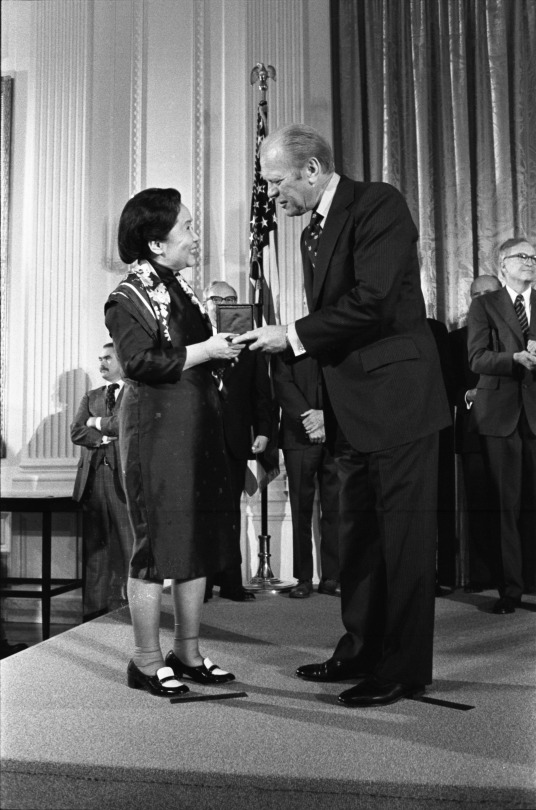
President Ford presenting the National Medal of Science to Dr. Chien-Shiung Wu in the East Room at the White House, 10/18/1976 (White House Photograph B1907-35)
Dr. Chien-Shiung Wu, sometimes known as the "First Lady of Physics," was born in China and came to the United States to pursue a PhD at the University of California, Berkeley. She began studying beta decay, a topic that she would continue to research later in her career. Dr. Wu worked on the Manhattan Project during World War II. In 1956 she designed an experiment and headed the team that discovered parity was not conserved in weak interactions. Although two of her male colleagues won the 1957 Nobel Prize in Physics as a result, her contribution was not formally until she received the first Wolf Prize in 1978. Dr. Wu received the National Medal of Science from President Ford on October 18, 1976, "for her ingenious experiments that led to new and surprising understanding of the decay of the radioactive nucleus."

First Lady Betty Ford Talks with Reporters Outside the Guttman Institute for Early Detection of Breast Cancer in New York City, 11/7/1975 (National Archives Identifier 12082709)
When she was diagnosed with breast cancer in September 1974, Betty Ford broke with social conventions by openly discussing her diagnosis and treatment. She inspired many women to get screenings and helped reassure those also dealing with breast cancer. Mrs. Ford used her position as First Lady to champion causes that were important to her. As outspoken advocate of women’s rights she supported the observance of International Women’s Year in 1975, urged the appointment of women to senior government positions, and pushed for the ratification of the Equal Rights Amendment.
#women's history month#women's history#women in congress#ArchivesLadiesWhoLead#Archives Ladies Who Lead#ArchivesHashtagParty
5 notes
·
View notes
Text
Lena Horne
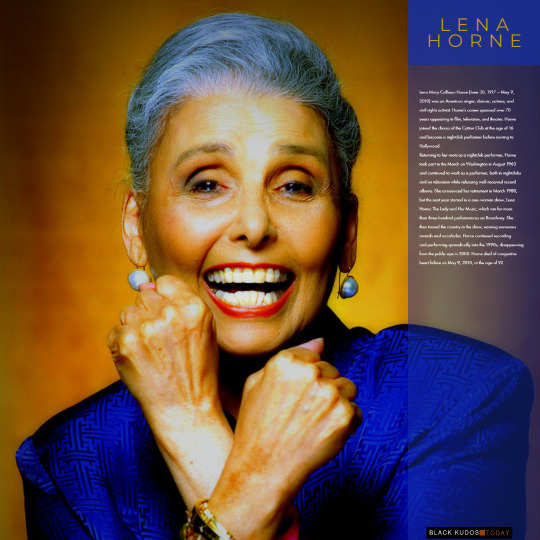
Lena Mary Calhoun Horne (June 30, 1917 – May 9, 2010) was an American singer, dancer, actress, and civil rights activist. Horne's career spanned over 70 years, appearing in film, television, and theater. Horne joined the chorus of the Cotton Club at the age of 16 and became a nightclub performer before moving to Hollywood.
Returning to her roots as a nightclub performer, Horne took part in the March on Washington in August 1963 and continued to work as a performer, both in nightclubs and on television while releasing well-received record albums. She announced her retirement in March 1980, but the next year starred in a one-woman show, Lena Horne: The Lady and Her Music, which ran for more than 300 performances on Broadway. She then toured the country in the show, earning numerous awards and accolades. Horne continued recording and performing sporadically into the 1990s, disappearing from the public eye in 2000. Horne died of congestive heart failure on May 9, 2010, at the age of 92.
Early life
Lena Horne was born in Bedford–Stuyvesant, Brooklyn. She was reportedly descended from the John C. Calhoun family, and both sides of her family were through a mixture of African, Native American, and European descent and belonged to the upper stratum of middle-class, well-educated people. Her father, Edwin Fletcher "Teddy" Horne Jr. (1893–1970), a numbers kingpin in the gambling trade, left the family when she was three and moved to an upper-middle-class African American community in the Hill District community of Pittsburgh, Pennsylvania. Her mother, Edna Louise Scottron (1894–1976), was a granddaughter of inventor Samuel R. Scottron; she was an actress with a black theatre troupe and traveled extensively. Edna's maternal grandmother, Amelie Louise Ashton, was a Senegalese slave. Horne was raised mainly by her grandparents, Cora Calhoun and Edwin Horne.
When Horne was five, she was sent to live in Georgia. For several years, she traveled with her mother. From 1927 to 1929, she lived with her uncle, Frank S. Horne, dean of students at Fort Valley Junior Industrial Institute (now part of Fort Valley State University) in Fort Valley, Georgia, who later served as an adviser to President Franklin Delano Roosevelt. From Fort Valley, southwest of Macon, Horne briefly moved to Atlanta with her mother; they returned to New York when Horne was 12 years old. She then attended Girls High School, an all-girls public high school in Brooklyn that has since become Boys and Girls High School; she dropped out without earning a diploma. Aged 18, she moved to her father's home in Pittsburgh, staying in the city's Little Harlem for almost five years and learning from native Pittsburghers Billy Strayhorn and Billy Eckstine, among others.
Career
Road to Hollywood
In the fall of 1933, Horne joined the chorus line of the Cotton Club in New York City. In the spring of 1934, she had a featured role in the Cotton Club Parade starring Adelaide Hall, who took Lena under her wing. Horne made her first screen appearance as a dancer in the musical short Cab Calloway's Jitterbug Party (1935). A few years later, Horne joined Noble Sissle's Orchestra, with which she toured and with whom she made her first records, issued by Decca. After she separated from her first husband, Horne toured with bandleader Charlie Barnet in 1940–41, but disliked the travel and left the band to work at the Cafe Society in New York. She replaced Dinah Shore as the featured vocalist on NBC's popular jazz series The Chamber Music Society of Lower Basin Street. The show's resident maestros, Henry Levine and Paul Laval, recorded with Horne in June 1941 for RCA Victor. Horne left the show after only six months when she was hired by former Cafe Trocadero (Los Angeles) manager Felix Young to perform in a Cotton Club-style revue on the Sunset Strip in Hollywood.
Horne already had two low-budget movies to her credit: a 1938 musical feature called The Duke is Tops (later reissued with Horne's name above the title as The Bronze Venus); and a 1941 two-reel short subject, Boogie Woogie Dream, featuring pianists Pete Johnson and Albert Ammons. Horne's songs from Boogie Woogie Dream were later released individually as soundies. Horne made her Hollywood nightclub debut at Felix Young's Little Troc on the Sunset Strip in January 1942. A few weeks later, she was signed by Metro-Goldwyn-Mayer. In November 1944, she was featured in an episode of the popular radio series Suspense, as a fictional nightclub singer, with a large speaking role along with her singing. In 1945 and 1946, she sang with Billy Eckstine's Orchestra.
She made her debut at Metro-Goldwyn-Mayer in Panama Hattie (1942) and performed the title song of Stormy Weather based loosely on the life of Adelaide Hall, (1943), at 20th Century Fox, while on loan from MGM. She appeared in a number of MGM musicals, most notably Cabin in the Sky (1943), but was never featured in a leading role because of her race and the fact that her films had to be re-edited for showing in cities where theaters would not show films with black performers. As a result, most of Horne's film appearances were stand-alone sequences that had no bearing on the rest of the film, so editing caused no disruption to the storyline. A notable exception was the all-black musical Cabin in the Sky, although one number from that film was cut before release because it was considered too suggestive by the censors: Horne singing "Ain't It the Truth" while taking a bubble bath. This scene and song are featured in the film That's Entertainment! III (1994) which also featured commentary from Horne on why the scene was deleted prior to the film's release. Lena Horne was the first African-American elected to serve on the Screen Actors Guild board of directors.
In Ziegfeld Follies (1946), she performed "Love" by Hugh Martin and Ralph Blane. Horne lobbied for the role of Julie LaVerne in MGM's 1951 version of Show Boat (having already played the role when a segment of Show Boat was performed in Till the Clouds Roll By, 1946) but lost the part to Ava Gardner, a personal friend in real life. Horne claimed this was due to the Production Code's ban on interracial relationships in films, but MGM sources state she was never considered for the role in the first place. In the documentary That's Entertainment! III, Horne stated that MGM executives required Gardner to practice her singing using Horne's recordings, which offended both actresses. Ultimately, Gardner's voice was overdubbed by actress Annette Warren (Smith) for the theatrical release.
Changes of direction
By the mid-1950s, Horne was disenchanted with Hollywood and increasingly focused on her nightclub career. She made only two major appearances for MGM during the 1950s: Duchess of Idaho (which was also Eleanor Powell's final film); and the 1956 musical Meet Me in Las Vegas. She was blacklisted during the 1950s for her affiliations in the 1940s with communist-backed groups. She would subsequently disavow communism. She returned to the screen three more times, playing chanteuse Claire Quintana in the 1969 film Death of a Gunfighter, Glinda in The Wiz (1978), which was directed by her then son-in-law Sidney Lumet, and co-hosting the MGM retrospective That's Entertainment! III (1994), in which she was candid about her unkind treatment by the studio.
After leaving Hollywood, Horne established herself as one of the premier nightclub performers of the post-war era. She headlined at clubs and hotels throughout the U.S., Canada, and Europe, including the Sands Hotel in Las Vegas, the Cocoanut Grove in Los Angeles, and the Waldorf-Astoria in New York. In 1957, a live album entitled, Lena Horne at the Waldorf-Astoria, became the biggest-selling record by a female artist in the history of the RCA Victor label at that time. In 1958, Horne became the first African-American woman to be nominated for a Tony Award for "Best Actress in a Musical" (for her part in the "Calypso" musical Jamaica) which, at Lena's request featured her longtime friend Adelaide Hall.
From the late 1950s through to the 1960s, Horne was a staple of TV variety shows, appearing multiple times on Perry Como's Kraft Music Hall, The Ed Sullivan Show, The Dean Martin Show, and The Bell Telephone Hour. Other programs she appeared on included The Judy Garland Show, The Hollywood Palace, and The Andy Williams Show. Besides two television specials for the BBC (later syndicated in the U.S.), Horne starred in her own U.S. television special in 1969, Monsanto Night Presents Lena Horne. During this decade, the artist Pete Hawley painted her portrait for RCA Victor, capturing the mood of her performance style.
In 1970, she co-starred with Harry Belafonte in the hour-long Harry & Lena special for ABC; in 1973, she co-starred with Tony Bennett in Tony and Lena. Horne and Bennett subsequently toured the U.S. and U.K. in a show together. In the 1976 program America Salutes Richard Rodgers, she sang a lengthy medley of Rodgers songs with Peggy Lee and Vic Damone. Horne also made several appearances on The Flip Wilson Show. Additionally, Horne played herself on television programs such as The Muppet Show, Sesame Street, and Sanford and Son in the 1970s, as well as a 1985 performance on The Cosby Show and a 1993 appearance on A Different World. In the summer of 1980, Horne, 63 years old and intent on retiring from show business, embarked on a two-month series of benefit concerts sponsored by the sorority Delta Sigma Theta. These concerts were represented as Horne's farewell tour, yet her retirement lasted less than a year.
On April 13, 1980, Horne, Luciano Pavarotti, and host Gene Kelly were all scheduled to appear at a Gala performance at the Metropolitan Opera House to salute the NY City Center's Joffrey Ballet Company. However, Pavarotti's plane was diverted over the Atlantic and he was unable to appear. James Nederlander was an invited Honored Guest and noted that only three people at the sold-out Metropolitan Opera House asked for their money back. He asked to be introduced to Lena following her performance. In May 1981, The Nederlander Organization, Michael Frazier, and Fred Walker went on to book Horne for a four-week engagement at the newly named Nederlander Theatre on West 41st Street in New York City. The show was an instant success and was extended to a full year run, garnering Horne a special Tony award, and two Grammy Awards for the cast recording of her show Lena Horne: The Lady and Her Music. The 333-performance Broadway run closed on Horne's 65th birthday, June 30, 1982. Later that same week, she performed the entire show again to record it for television broadcast and home video release. Horne began a tour a few days later at Tanglewood (Massachusetts) during the weekend of July 4, 1982. The Lady and Her Music toured 41 cities in the U.S. and Canada until June 17, 1984. It played in London for a month in August and ended its run in Stockholm, Sweden, September 14, 1984. In 1981, she received a Special Tony Award for the show, which also played to acclaim at the Adelphi Theatre in London in 1984. Despite the show's considerable success (Horne still holds the record for the longest-running solo performance in Broadway history), she did not capitalize on the renewed interest in her career by undertaking many new musical projects. A proposed 1983 joint recording project between Horne and Frank Sinatra (to be produced by Quincy Jones) was ultimately abandoned, and her sole studio recording of the decade was 1988's The Men in My Life, featuring duets with Sammy Davis Jr. and Joe Williams. In 1989, she received the Grammy Lifetime Achievement Award.
In 1995, a "live" album capturing Horne's Supper Club performance was released (subsequently winning a Grammy Award for Best Jazz Vocal Album). In 1998, Horne released another studio album, entitled Being Myself. Thereafter, Horne retired from performing and largely retreated from public view, though she did return to the recording studio in 2000 to contribute vocal tracks on Simon Rattle's Classic Ellington album.
Civil rights activism
Horne was long involved with the Civil Rights Movement. In 1941, she sang at Cafe Society and worked with Paul Robeson. During World War II, when entertaining the troops for the USO, she refused to perform "for segregated audiences or for groups in which German POWs were seated in front of black servicemen", according to her Kennedy Center biography. Because the U.S. Army refused to allow integrated audiences, she staged her show for a mixed audience of black U.S. soldiers and white German POWs. Seeing the black soldiers had been forced to sit in the back seats, she walked off the stage to the first row where the black troops were seated and performed with the Germans behind her. After quitting the USO in 1945 because of the organization's policy of segregating audiences, Horne financed tours of military camps herself.
She was at an NAACP rally with Medgar Evers in Jackson, Mississippi, the weekend before Evers was assassinated. She also met President John F. Kennedy at the White House two days before he was assassinated. She was at the March on Washington and spoke and performed on behalf of the NAACP, SNCC, and the National Council of Negro Women. She also worked with Eleanor Roosevelt to pass anti-lynching laws. Tom Lehrer mentions her in his song "National Brotherhood Week" in the line "Lena Horne and Sheriff Clark are dancing cheek to cheek" referring (wryly) to her and to Sheriff Jim Clark, of Selma, Alabama, who was responsible for a violent attack on civil rights marchers in 1965. In 1983, the NAACP awarded her the Spingarn Medal.
Horne was a registered Democrat and on November 20, 1963, she, along with Democratic National Committee (DNC) Chairman John Bailey, Carol Lawrence, Richard Adler, Sidney Salomon, Vice-Chairwoman of the DNC Margaret B. Price, and Secretary of the DNC Dorothy Vredenburgh Bush, visited John F. Kennedy at The White House, two days prior to his assassination.
Personal life
Horne married Louis Jordan Jones, a political operative, in January 1937 in Pittsburgh. On December 21, 1937, their daughter, Gail (later known as Gail Lumet Buckley, a writer) was born. They had a son, Edwin Jones (February 7, 1940 – September 12, 1970) who died of kidney disease. Horne and Jones separated in 1940 and divorced in 1944. Horne's second marriage was to Lennie Hayton, who was music director and one of the premier musical conductors and arrangers at MGM, in December 1947 in Paris. They separated in the early 1960s, but never divorced; he died in 1971. In her as-told-to autobiography Lena by Richard Schickel, Horne recounts the enormous pressures she and her husband faced as an interracial couple. She later admitted in an interview in Ebony (May 1980) that she had married Hayton to advance her career and cross the "color-line" in show business.
Horne had affairs with Artie Shaw, Orson Welles, Vincente Minnelli, and the boxer Joe Louis.
Horne also had a long and close relationship with Billy Strayhorn, whom she said she would have married if he had been heterosexual. He was also an important professional mentor to her. Screenwriter Jenny Lumet, known for her award-winning screenplay Rachel Getting Married, is Horne's granddaughter, the daughter of filmmaker Sidney Lumet and Horne's daughter Gail. Her other grandchildren include Gail's other daughter, Amy Lumet, and her son's four children, Thomas, William, Samadhi, and Lena. Her great-grandchildren include Jake Cannavale.
From 1946 to 1962, Horne resided in a St. Albans, Queens, New York, enclave of prosperous African Americans, where she counted among her neighbors Count Basie, Ella Fitzgerald, and other jazz luminaries.
Death
Horne died of congestive heart failure on May 9, 2010. Her funeral took place at St. Ignatius Loyola Church on Park Avenue in New York. Thousands gathered and attendees included Leontyne Price, Dionne Warwick, Liza Minnelli, Jessye Norman, Chita Rivera, Cicely Tyson, Diahann Carroll, Leslie Uggams, Lauren Bacall, Robert Osborne, Audra McDonald, and Vanessa Williams. Her remains were cremated.
Legacy
In 2003, ABC announced that Janet Jackson would star as Horne in a television biographical film. In the weeks following Jackson's "wardrobe malfunction" debacle during the 2004 Super Bowl, however, Variety reported that Horne had demanded Jackson be dropped from the project. "ABC executives resisted Horne's demand", according to the Associated Press report, "but Jackson representatives told the trade newspaper that she left willingly after Horne and her daughter, Gail Lumet Buckley, asked that she not take part." Oprah Winfrey stated to Alicia Keys during a 2005 interview on The Oprah Winfrey Show that she might possibly consider producing the biopic herself, casting Keys as Horne.
In January 2005, Blue Note Records, her label for more than a decade, announced that "the finishing touches have been put on a collection of rare and unreleased recordings by the legendary Horne made during her time on Blue Note." Remixed by her longtime producer Rodney Jones, the recordings featured Horne with a remarkably secure voice for a woman of her years, and include versions of such signature songs as "Something to Live For", "Chelsea Bridge", and "Stormy Weather". The album, originally titled Soul but renamed Seasons of a Life, was released on January 24, 2006. In 2007, Horne was portrayed by Leslie Uggams as the older Lena and Nikki Crawford as the younger Lena in the stage musical Stormy Weather staged at the Pasadena Playhouse in California (January to March 2009). In 2011, Horne was also portrayed by actress Ryan Jillian in a one-woman show titled Notes from A Horne staged at the Susan Batson studio in New York City, from November 2011 to February 2012. The 83rd Academy Awards presented a tribute to Horne by actress Halle Berry at the ceremony held February 27, 2011.
In 2018, a forever stamp depicting Horne began to be issued; this made Horne the 41st honoree in the Black Heritage stamp series.
2 notes
·
View notes
Text
Debunking Misinformation on animation history
Mr. Bug Goes To Town 1942 Fleischer Studios
"Failed on December, 1941 due to Pearl Harbor"
Nope Just Nope
in 2013 on cartoon research, more info has come to light. go read it! Here is the link below!
http://cartoonresearch.c...-and-hoppity-go-to-town/
and please read the book The Art and Inventions Of Max Fleischer.
A smiliar fate as with Sullivan's Travels happend, both had press releases for the critics,
both films have delayed release dates.
also theaters during 1941 didn't want to show Mr. Bug.
In January of 1942, Paramount released the film in England under the title Hoppity Goes to Town.
In February 1942 Mr. Bug Goes To Town finally made it to North American theaters.
years later when an TV company named N.T.A. got the rights to half of the early Paramount libray,
N.T.A released the film with the British title. (with N.T.A.'s static burlap title.)
Does the orginial British title Hoppity Goes to Town still exist?
7 notes
·
View notes
Text
Events 4.6
46 BC – Julius Caesar defeats Caecilius Metellus Scipio and Marcus Porcius Cato (Cato the Younger) at the Battle of Thapsus.
402 – Stilicho defeats the Visigoths under Alaric in the Battle of Pollentia.
1250 – Seventh Crusade: Ayyubids of Egypt capture King Louis IX of France in the Battle of Fariskur.
1320 – The Scots reaffirm their independence by signing the Declaration of Arbroath.
1327 – The poet Petrarch first sees his idealized love, Laura, in the church of Saint Clare in Avignon.
1385 – John, Master of the Order of Aviz, an illegitimate son of Peter I of Portugal, is made king John I of Portugal.
1453 – Mehmed II begins his siege of Constantinople (Istanbul), which falls on May 29.
1580 – One of the largest earthquakes recorded in the history of England, Flanders, or Northern France, takes place.
1652 – At the Cape of Good Hope, Dutch sailor Jan van Riebeeck establishes a resupply camp that eventually becomes Cape Town.
1712 – The New York Slave Revolt of 1712 begins near Broadway.
1776 – American Revolutionary War: Ships of the Continental Navy fail in their attempt to capture a Royal Navy dispatch boat.
1782 – King Buddha Yodfa Chulaloke (Rama I) of Siam (modern day Thailand) establishes the Chakri dynasty.
1793 – During the French Revolution, the Committee of Public Safety becomes the executive organ of the republic.
1808 – John Jacob Astor incorporates the American Fur Company, that would eventually make him America's first millionaire.
1812 – British forces under the command of the Duke of Wellington assault the fortress of Badajoz. This would be the turning point in the Peninsular War against Napoleon-led France.
1814 – Nominal beginning of the Bourbon Restoration; anniversary date that Napoleon abdicates and is exiled to Elba.
1830 – Church of Christ, the original church of the Latter Day Saint movement, is organized by Joseph Smith and others at either Fayette or Manchester, New York.
1841 – U.S. President John Tyler is sworn in, two days after having become President upon William Henry Harrison's death.
1860 – The Reorganized Church of Jesus Christ of Latter Day Saints, later renamed Community of Christ, is organized by Joseph Smith III and others at Amboy, Illinois.
1861 – First performance of Arthur Sullivan's debut success, his suite of incidental music for The Tempest, leading to a career that included the famous Gilbert and Sullivan operas.
1862 – American Civil War: The Battle of Shiloh begins: In Tennessee, forces under Union General Ulysses S. Grant meet Confederate troops led by General Albert Sidney Johnston.
1865 – American Civil War: The Battle of Sailor's Creek: Confederate General Robert E. Lee's Army of Northern Virginia fights and loses its last major battle while in retreat from Richmond, Virginia during the Appomattox Campaign.
1866 – The Grand Army of the Republic, an American patriotic organization composed of Union veterans of the American Civil War, is founded. It lasts until 1956.
1869 – Celluloid is patented.
1888 – Thomas Green Clemson dies, bequeathing his estate to the State of South Carolina to establish Clemson Agricultural College.
1893 – Salt Lake Temple of The Church of Jesus Christ of Latter-day Saints is dedicated by Wilford Woodruff.
1895 – Oscar Wilde is arrested in the Cadogan Hotel, London, after losing a libel case against the Marquess of Queensberry.
1896 – In Athens, the opening of the first modern Olympic Games is celebrated, 1,500 years after the original games are banned by Roman emperor Theodosius I.
1909 – Robert Peary and Matthew Henson become the first people to reach the North Pole; Peary's claim has been disputed because of failings in his navigational ability.
1911 – During the Battle of Deçiq, Dedë Gjon Luli Dedvukaj, leader of the Malësori Albanians, raises the Albanian flag in the town of Tuzi, Montenegro, for the first time after George Kastrioti (Skanderbeg).
1917 – World War I: The United States declares war on Germany (see President Woodrow Wilson's address to Congress).
1926 – Varney Airlines makes its first commercial flight (Varney is the root company of United Airlines).
1929 – Huey P. Long, Governor of Louisiana, is impeached by the Louisiana House of Representatives.
1930 – At the end of the Salt March, Gandhi raises a lump of mud and salt and declares, "With this, I am shaking the foundations of the British Empire."
1936 – Tupelo–Gainesville tornado outbreak: Another tornado from the same storm system as the Tupelo tornado hits Gainesville, Georgia, killing 203.
1941 – World War II: Nazi Germany launches Operation 25 (the invasion of Kingdom of Yugoslavia) and Operation Marita (the invasion of Greece).
1945 – World War II: Sarajevo is liberated from German and Croatian forces by the Yugoslav Partisans.
1945 – World War II: The Battle of Slater's Knoll on Bougainville comes to an end.
1947 – The first Tony Awards are presented for theatrical achievement.
1957 – Greek shipping tycoon Aristotle Onassis buys the Hellenic National Airlines (TAE) and founds Olympic Airlines.
1965 – Launch of Early Bird, the first commercial communications satellite to be placed in geosynchronous orbit.
1968 – In Richmond, Indiana's downtown district, a double explosion kills 41 and injures 150.
1968 – Pierre Elliott Trudeau wins the Liberal Leadership Election, and becomes Prime Minister of Canada soon after.
1970 – Newhall massacre: Four California Highway Patrol officers are killed in a shootout.
1972 – Vietnam War: Easter Offensive: American forces begin sustained air strikes and naval bombardments.
1973 – Launch of Pioneer 11 spacecraft.
1973 – The American League of Major League Baseball begins using the designated hitter.
1974 – The Swedish pop band ABBA wins the Eurovision Song Contest with the song "Waterloo", launching their international career.
1979 – Student protests break out in Nepal.
1984 – Members of Cameroon's Republican Guard unsuccessfully attempt to overthrow the government headed by Paul Biya.
1992 – The Bosnian War begins.
1994 – The Rwandan genocide begins when the aircraft carrying Rwandan president Juvénal Habyarimana and Burundian president Cyprien Ntaryamira is shot down.
1997 – In Greene County, Tennessee, the Lillelid murders occurs when a group of young people abduct and kidnap a religious family before shooting them dead on a rural suburban road.
1998 – Nuclear weapons testing: Pakistan tests medium-range missiles capable of reaching India.
1998 – Travelers Group announces an agreement to undertake the $76 billion merger between Travelers and Citicorp, and the merger is completed on October 8, of that year, forming Citibank.
2004 – Rolandas Paksas becomes the first president of Lithuania to be peacefully removed from office by impeachment.
2005 – Kurdish leader Jalal Talabani becomes Iraqi president; Shiite Arab Ibrahim al-Jaafari is named premier the next day.
2008 – The 2008 Egyptian general strike starts led by Egyptian workers later to be adopted by April 6 Youth Movement and Egyptian activists.
2009 – A 6.3 magnitude earthquake strikes near L'Aquila, Italy, killing 307.
2010 – Maoist rebels kill 76 CRPF officers in Dantewada district, India.
2011 – In San Fernando, Tamaulipas, Mexico, over 193 victims of Los Zetas were exhumed from several mass graves.
2012 – Azawad declares itself independent from the Republic of Mali.
2017 – U.S. military launches 59 Tomahawk cruise missiles at an air base in Syria. Russia describes the strikes as an "aggression", adding they significantly damage US-Russia ties.
2018 – A bus carrying the Humboldt Broncos junior ice hockey team collides with a semi-truck in Saskatchewan, Canada, killing 16 people and injuring 13 others.
1 note
·
View note
Photo

Movies I watched this week / 12
✳️✳️✳️ Classic Albums: The Dark Side of the Moon: 2003 documentary about Pink Floyd recording of the 1973 record. 9/10
✳️✳️✳️ German Martin Miller Session Band plays a faithful cover of Dark Side of the Moon, Live in studio, 2017
✴️
A Life Story: Woman of Heart and Mind, a by-the-numbers 2003 profile of Joni Mitchell from ‘American Masters’, but full of wonderful, poetic music from her early years.
✴️
The Father - Heartbreaking, magnificent performance as Anthony Hopkins loses everything to dementia, until he has nothing left but tears.
Best film of the week.
✴️
The groundbreaking animated allegory Fantastic Planet / La Planète sauvage - France, 1973. Hieronymus Bosch story about a surreal world of giant blue aliens who consider their tiny human playthings as dispensable slaves.
"Fantastic Planet is the strangest animated movie ever made”.
Some Fantastic Planet dub, that I loved, loved many years ago.
✴️
Because Jessica Walters died this week, I binge-watched "Arrested Development" (for my first time) - funny Newport Beach sitcom.
A super-cut of Lucille Bluth‘s “best” lines and of “I've made a huge mistake“.
✴️
✳️✳️✳️ First Watch: Preston Sturges’ classic Sullivan’s Travels. Successful comedy star wants to see first hand how the Other Half lives, and takes a trip as a hobo in 1941 America. 7/10.
✳️✳️✳️ Christmas in July, the film that Preston Sturges did just before that. Hollywood 1940.
✴️
I remembered Tarsem’s The Fall as the most beautiful movie in the world. Because it was hard to find, I could not watch it again until now.
It’s a “different” recursive fantasy about storytelling, with stunning visuals. A paralyzed stuntman laying in a Los Angeles sanatorium in 1915, spins a convoluted fairy tale to a 6-year-old Romanian girl, and they both visualize the story in different ways.
Highly recommended. (Photo above)
✴️
And Tarsem’s first-time feature, The Cell, a psychological horror dreamscape with Jennifer Lopez, who is trying to enter the mind of a comatose serial killer. Visually rich and original, but full of perverse sado-masochistic imagery.
With Hank Schrader in his same Breaking Bad role.
✴️
Ruben Östlund’s terrific drama Force Majeure. It’s about a Swedish family who experiences a sudden avalanche in an Alpine sky resort, during which the husband instinctively turns to run away, while the wife stays to protect their kids.
Interesting how the silent housekeeping guy was used like a Greek chorus. (Re-watch). 8/10
✴️
Then, 6 years later, somebody had to remake it into an American Downhill with entitled man-baby Will Ferrell (who can’t play a real person), and Jared “Zach” Dunn as “Zach”. But like a bad Disneyfied copy, I can’t figure out why even try it? Where Force Majeure was subtle and unsettling, Downhill is cheap and shallow.
✴️
Ruben Östlund’s next film was The Square, a rambling take-down satire about the pretentiousness of the contemporary art world. Excellent style mixed with some very uncomfortable scenes that creates “chaos” and confusion.
✴️
Locked down - an incompatible couple steals a $3M diamond from London’s Harrods before they break up. One of the first outright Covid-19 movies, with Danish actor Claes Bang (the protagonist from The Square) in a small role. Nearly good.
✴️
Donny's Bar Mitzvah, a new gross-out comedy, set in 1998 as filmed by a party videographer. 10% too juvenile, 10% too offensive, 10% too politically-incorrect. But it easily could have been so much funnier.
With Danny Trejo as a shape-shifting secret agent. 5+
Trailer.
✴️
Marketing the Messiah, a light Australian documentary about the “True” history of early Christianity. Doesn’t come out and say it, but shows that it was all basically just made up out of whole cloth.
✴️
I “had to” watch Soul again, for the third time. The music parts are just too genial, as well as the live NYC parts. The blue Metaphysical explanations though are too artificial, “other-worldly”, and as such not as engaging.
✴️
From the team that made ‘Shaun of the Dead’ & ‘Hot Fuzz’, Attack The Block, a comic horror about a teen gang in South London defending their block from an alien invasion. With Nick Frost, but too noisy for me.
Ron’s Weed Room: "It's a big room full of weed. And it's Ron's"
- - - - -
(My complete list is here)
0 notes
Text
Spinal Tap is in at number 9 – top comedies of all time #greatestcomedies

BBC Culture, armed with the cash of the profit-making arm of BBC World, asked 253 film critics – 118 women and 135 men – from 52 countries and six continents a simple: “What do you think are the 10 best comedies of all time?”
The results:
100. (tie) The King of Comedy (Martin Scorsese, 1982)
100. The Ladies Man (Jerry Lewis, 1961)
99. The Jerk (Carl Reiner, 1979)
98. The Hangover (Todd Phillips, 2009)
97. The Music Box (James Parrott, 1932)
96. Born Yesterday (George Cukor, 1950)
95. Ghostbusters (Ivan Reitman, 1984)
94. Rushmore (Wes Anderson, 1998)
93. South Park: Bigger, Longer & Uncut (Trey Parker, 1999)
92. The Exterminating Angel (Luis Buñuel, 1962)
91. What’s Up, Doc? (Peter Bogdanovich, 1972)
90. A New Leaf (Elaine May, 1971)
89. Daisies (Vera Chytilová, 1966)
88. Zoolander (Ben Stiller, 2001)
87. Gentlemen Prefer Blondes (Howard Hawks, 1953)
86. Kind Hearts and Coronets (Robert Hamer, 1949)
85. Amarcord (Federico Fellini, 1973)
84. Waiting for Guffman (Christopher Guest, 1996)
83. Safety Last! (Fred C Newmeyer and Sam Taylor, 1923)
82. Top Secret! (Jim Abrahams, David Zucker and Jerry Zucker, 1984)
81. There’s Something About Mary (Bobby and Peter Farrelly, 1998)
80. Office Space (Mike Judge, 1999)
79. The Dinner Game (Francis Veber, 1998)
78. The Princess Bride (Rob Reiner, 1987)
77. Divorce Italian Style (Pietro Germi, 1961)
76. Design for Living (Ernst Lubitsch, 1933)
75. The Palm Beach Story (Preston Sturges, 1942)
74. Trading Places (John Landis, 1983)
73. The Nutty Professor (Jerry Lewis, 1963)
72. The Naked Gun: From the Files of Police Squad! (David Zucker, 1988)
71. The Royal Tenenbaums (Wes Anderson, 2001)
70. In the Loop (Armando Iannucci, 2009)
69. Love and Death (Woody Allen, 1975)
68. Ninotchka (Ernst Lubitsch, 1939)
67. Sons of the Desert (William A Seiter, 1933)
66. Hot Fuzz (Edgar Wright, 2007)
65. Caddyshack (Harold Ramis, 1980)
64. Step Brothers (Adam McKay, 2008)
63. Arsenic and Old Lace (Frank Capra, 1944)
62. What We Do in the Shadows (Jemaine Clement and Taika Waititi, 2014)
61. Team America: World Police (Trey Parker, 2004)
60. Shaun of the Dead (Edgar Wright, 2004)
59. Toni Erdmann (Maren Ade, 2016)
58. Zelig (Woody Allen, 1983)
57. Mean Girls (Mark Waters, 2004)
56. Broadcast News (James L Brooks, 1987)
55. Best in Show (Christopher Guest, 2000)
54. Harold and Maude (Hal Ashby, 1971)
53. The Blues Brothers (John Landis, 1980)
52. My Man Godfrey (Gregory La Cava, 1936)
51. Seven Chances (Buster Keaton, 1925)
50. Women on the Verge of a Nervous Breakdown (Pedro Almodóvar, 1988)
49. The Discreet Charm of the Bourgeoisie (Luis Buñuel, 1972)
48. Trouble in Paradise (Ernst Lubitsch, 1932)
47. Animal House (John Landis, 1978)
46. Pulp Fiction (Quentin Tarantino, 1994)
45. Big Deal on Madonna Street (Mario Monicelli, 1958)
44. Bridesmaids (Paul Feig, 2011)
43. M*A*S*H (Robert Altman, 1970)
42. The Awful Truth (Leo McCarey, 1937)
41. Borat: Cultural Learnings of America for Make Benefit Glorious Nation of Kazakhstan (Larry Charles, 2006)
40. The Producers (Mel Brooks, 1967)
39. A Night at the Opera (Sam Wood and Edmund Goulding, 1935)
38. The Philadelphia Story (George Cukor, 1940)
37. Sullivan’s Travels (Preston Sturges, 1941)
36. A Fish Called Wanda (Charles Crichton and John Cleese, 1988)
35. Singin’ in the Rain (Stanley Donen and Gene Kelly, 1952)
34. Clueless (Amy Heckerling, 1995)
33. Anchorman: The Legend of Ron Burgundy (Adam McKay, 2004)
32. Raising Arizona (Joel and Ethan Coen, 1987)
31. Tootsie (Sydney Pollack, 1982)
30. Monsieur Hulot’s Holiday (Jacques Tati, 1953)
29. When Harry Met Sally… (Rob Reiner, 1989)
28. It Happened One Night (Frank Capra, 1934)
27. The Apartment (Billy Wilder, 1960)
26. Mon Oncle (Jacques Tati, 1958)
25. The Gold Rush (Charlie Chaplin, 1925)
24. Withnail and I (Bruce Robinson, 1987)
23. The Party (Blake Edwards, 1968)
22. Young Frankenstein (Mel Brooks, 1974)
21. City Lights (Charlie Chaplin, 1931)
20. Blazing Saddles (Mel Brooks, 1974)
19. The Lady Eve (Preston Sturges, 1941)
18. Sherlock Jr (Buster Keaton, 1924)
17. Bringing Up Baby (Howard Hawks, 1938)
16. The Great Dictator (Charlie Chaplin, 1940)
15. Monty Python and the Holy Grail (Terry Gilliam and Terry Jones, 1975)
14. His Girl Friday (Howard Hawks, 1940)
13. To Be or Not To Be (Ernst Lubitsch, 1942)
12. Modern Times (Charlie Chaplin, 1936)
11. The Big Lebowski (Joel and Ethan Coen, 1998)
10. The General (Clyde Bruckman and Buster Keaton, 1926)
9. This Is Spinal Tap (Rob Reiner, 1984)
8. Playtime (Jacques Tati, 1967)
7. Airplane! (Jim Abrahams, David Zucker and Jerry Zucker, 1980)
6. Life of Brian (Terry Jones, 1979)
5. Duck Soup (Leo McCarey, 1933)
4. Groundhog Day (Harold Ramis, 1993)
3. Annie Hall (Woody Allen, 1977)
2. Dr Strangelove or: How I Learned to Stop Worrying and Love the Bomb (Stanley Kubrick, 1964)
1. Some Like It Hot (Billy Wilder, 1959)
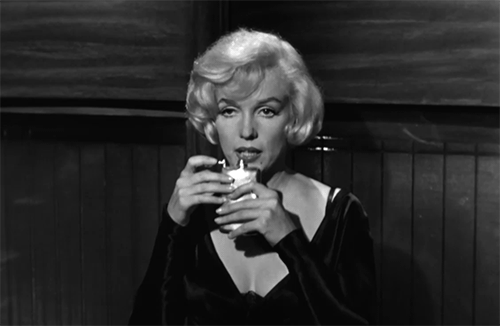
#BBC#Film#Zine#Magazine#Art#Music#Fashion#Video#Poetry#Writing#Culture#Counterculture#Subculture#Punk#Grunge#Underground#Literature#Photography#Independent#Indie#London
3 notes
·
View notes
Text
Bob Dylan

Robert Allen Zimmerman, 24 May 1941, Duluth, Minnesota, USA. Bob Dylan is without doubt one of the most influential figures in the history of popular music. He is the writer of scores of classic songs and is generally regarded as the man who brought literacy to rock lyrics.
The son of the middle-class proprietor of an electrical and furniture store, as a teenager, living in Hibbing, Minnesota, Robert Zimmerman was always intrigued by the romanticism of the outsider. He loved James Dean movies, liked riding motorcycles and wearing biker gear, and listened to R&B music on radio stations transmitting from the south. A keen fan of folk singer Odetta and country legend Hank Williams, he was also captivated by early rock ‘n’ roll. When he began playing music himself, with school friends in bands such as the Golden Chords and Elston Gunn And The Rock Boppers, it was as a clumsy but enthusiastic piano player, and it was at this time that he declared his ambition in a high school yearbook ‘to join Little Richard’. In 1959, he began visiting Minneapolis at weekends and on his graduation from high school, enrolled at the University of Minnesota there, although he spent most of his time hanging around with local musicians in the beatnik coffee-houses of the Dinkytown area. It was in Minneapolis that he first discovered blues music, and he began to incorporate occasional blues tunes into the primarily traditional material that made up his repertoire as an apprentice folk singer.
His first album, called simply Bob Dylan, was released in March 1962. It presented a collection of folk and blues standards, often about death and sorrows and the trials of life, songs that had been included in Dylan’s repertoire over the past year or so, performed with gusto and an impressive degree of sensitivity for a 20-year-old. However, it was the inclusion of two of his own compositions, most notably the mature and affectionate tribute, ‘Song To Woody’, that pointed the way forward. Over the next few months, Dylan wrote dozens of songs, many of them ‘topical’ songs. Encouraged by his girlfriend, Suze Rotolo, Dylan became interested in, and was subsequently adopted by, the Civil Rights movement. His song ‘Blowin’ In The Wind’, written in April 1962, was to be the most famous of his protest songs and was included on his second album, The Freewheelin’ Bob Dylan, released in May 1963. In the meantime, Dylan had written and recorded several other noteworthy early political songs, including ‘Masters Of War’ and ‘A Hard Rain’s A-Gonna Fall’, and, during a nine-month separation from Suze, one of his greatest early love songs, ‘Don’t Think Twice, It’s All Right’.
At the end of 1962, he recorded a single, a rock ‘n’ roll song called ‘Mixed Up Confusion’, with backing musicians. The record was quickly deleted, apparently because Dylan’s manager, Albert Grossman, saw that the way forward for his charge was not as a rocker, but as an earnest acoustic folky. Similarly, tracks that had been recorded for Dylan’s second album with backing musicians were scrapped, although the liner notes which commented on them and identified the players, remained carelessly unrevised. The Freewheelin’ record was so long in coming that four original song choices were substituted at the last moment by other, more newly composed songs. One of the tracks omitted was ‘Talking John Birch Society Blues’, which Dylan had been controversially banned from singing on the Ed Sullivan Show in May 1963. The attendant publicity did no harm whatsoever to Dylan’s stature as a radical new ‘anti-establishment’ voice. At the same time, Grossman’s shrewd decision to have a somewhat saccharine version of ‘Blowin’ In The Wind’ recorded by Peter, Paul And Mary also paid off, the record becoming a huge hit in the USA, and bringing Dylan’s name to national, and indeed international, attention for the first time.
Here, then, was Bob Dylan the poet, and here the arguments about the relative merits of high art and popular art began. The years 1964-66 were unquestionably Dylan’s greatest as a writer and as a performer; they were also his most influential years and many artists today still cite the three albums that followed, Bringing It All Back Home and Highway 61 Revisited from 1965 and 1966’s double album Blonde On Blonde as being seminal in their own musical development.
Another Side Of Bob Dylan was to be Dylan’s last solo acoustic album for almost 30 years. Intrigued by what the Beatles were doing - he had visited London again to play one concert at the Royal Festival Hall in May 1964 - and particularly excited by the Animals’ ‘folk rock’ cover version of ‘House Of The Rising Sun’, a track Dylan himself had included on his debut album, he and producer Tom Wilson fleshed out some of the Bringing It All Back Home songs with rock ‘n’ roll backings - the proto-rap ‘Subterranean Homesick Blues’ and ‘Maggie’s Farm’, for instance. However, the song that was perhaps Dylan’s most important mid-60s composition, ‘Like A Rolling Stone’, was written immediately after the final series of acoustic concerts played in the UK in April and May 1965, and commemorated in D.A. Pennebaker’s famous documentary film, Don’t Look Back. Bob Dylan said that he began to write ‘Like A Rolling Stone’ having decided to ‘quit’ singing and playing. The lyrics to the song emerged from six pages of stream-of-consciousness ‘vomit’; the sound of the single emerged from the immortal combination of Chicago blues guitarist Michael Bloomfield, bass player Harvey Brooks and fledgling organ-player Al Kooper. ‘Like A Rolling Stone’ was producer Tom Wilson’s last, and greatest, Dylan track. At six minutes, it destroyed the formula of the sub-three-minute single forever. It was a huge hit and was played, alongside the Byrds’ equally momentous version of ‘Mr Tambourine Man’, all over the radio in the summer of 1965.
Consequently, it should have come as no surprise to those who went to see Bob Dylan at the Newport Folk Festival on July 25 that he was now a fully-fledged folk rocker; but, apparently, it did. Backed by the Paul Butterfield Blues Band, Dylan’s supposedly ‘new sound’ - although admittedly it was his first concert with supporting musicians - was met with a storm of bewilderment and hostility. Stories vary as to how much Dylan was booed that night, and why, but Dylan seemed to find the experience both exhilarating and liberating. If, after the UK tour, he had felt ready to quit, now he was ready to start again, to tour the world with a band and to take his music, and himself, to the farthest reaches of experience, just like Rimbaud. Bob Dylan’s discovery of the Hawks, a Canadian group who had been playing roadhouses and funky bars until introductions were made via John Hammond Jnr. and Albert Grossman’s secretary Mary Martin, was one of those pieces of alchemical magic that happen hermetically. The Hawks, later to become the Band, comprised Robbie Robertson, Richard Manuel, Garth Hudson, Rick Danko and Levon Helm. Bob Dylan’s songs and the Hawks’ sound were made for each other. After a couple of stormy warm-up gigs, they took to the road in the autumn of 1965 and travelled through the USA, then, via Hawaii, to Australia, on to Scandinavia and finally to Britain, with a hop over to Paris for a birthday show, in May 1966. Bob Dylan was deranged and dynamic, the group wild and mercurial. Their set, the second half of a show that opened with Dylan playing acoustically to a reverentially silent house, was provocative and perplexing for many. It was certainly the loudest thing anyone had ever heard, and, almost inevitably, the electric set was greeted with anger and dismay. Drummer LevonHelm was so disheartened by the ferocity of the booing that he quit before the turn of the year - drummers Sandy Konikoff and Mickey Jones completed the tour. The most infamous date took place at the Manchester Free Trade Hall in England; known erroneously as the ‘Royal Albert Hall’ concert for many years, the recording was officially released in 1998. After an angry folk fan shouts out ‘Judas’ from the audience, Dylan responds ‘I don’t believe you! You’re a liar!’ and turns round to the band and instructs them to ‘play fuckin’ loud!’ as they begin playing the last song of the night, ‘Like A Rolling Stone’.
Offstage, Dylan was spinning out of control, not sleeping, not eating, looking wasted and apparently heading rapidly for rock ‘n’ roll oblivion. Pennebaker again filmed the tour, this time in Dylan’s employ. The ‘official’ record of the tour was the rarely seen Eat The Document, a film originally commissioned by ABC-TV. The unofficial version compiled by Pennebaker himself was You Know Something Is Happening. ‘What was happening, ’ says Pennebaker, ‘was drugs...’. Bob Dylan was physically exhausted when he returned to America in June 1966, but had to complete the film and finish Tarantula, the book that was overdue for Macmillan. He owed Columbia two more albums before his contract expired, and was booked to play a series of concerts right up to the end of the year in increasingly bigger venues, including Shea Stadium. Then, on 29 July 1966, Dylan was injured in a motorcycle accident near his home in Bearsville, near Woodstock, upper New York State. Was there really a motorcycle accident? Dylan still claims there was. He hurt his neck and had treatment. More importantly, the accident allowed him to shrug off the responsibilities that had been lined up on his behalf by manager Grossman. By now, the relationship between Dylan and Grossman was less than cordial and litigation between the two of them was ongoing until Grossman’s death almost 20 years later.
A US tour followed. Tickets were sold by post and attracted six million applications. Everybody who went to the shows agreed that Dylan and the Band were fantastic. The recorded evidence, Before The Flood, also released by Asylum, certainly oozes energy, but lacks subtlety: Dylan seemed to be trying too hard, pushing everything too fast. It is good, but not that good. What is that good, indisputably and incontestably, is Blood On The Tracks. Originally recorded (for Columbia, no hard feelings, etc.) in late 1974, Dylan substituted some of the songs with versions reworked in Minnesota over the Christmas period. They were his finest compositions since the Blonde On Blonde material. ‘Tangled Up In Blue’, ‘Idiot Wind’, ‘If You See Her, Say Hello’, ‘Shelter From The Storm’, ‘Simple Twist Of Fate’, ‘You’re A Big Girl Now’... one masterpiece followed another. It was not so much a divorce album as a separation album (Dylan’s divorce from Sara wasn’t completed until 1977), but it was certainly a diary of despair. ‘Pain sure brings out the best in people, doesn’t it?’ Dylan sang in 1966’s ‘She’s Your Lover Now’; Blood On The Tracks gave the lie to all those who had argued that Dylan was a spent force.
After three turbulent years, it was hardly surprising that Dylan dropped from sight for most of 1982, but the following year he was back in the studio, again with Mark Knopfler, having, it was subsequently established, written a prolific amount of new material. The album that resulted, Infidels, released in October 1983, received a mixed reception. Some songs were strong - ‘I&I’ and ‘Jokerman’ among them - others relatively unimpressive. Bob Dylan entered the video age by making promos for ‘Sweetheart Like You’ and ‘Jokerman’, but did not seem too excited about it. Rumours persisted about his having abandoned Christianity and re-embraced the Jewish faith. His name began to be linked with the ultra-orthodox Lubavitcher sect: the inner sleeve of Infidels pictured him touching the soil of a hill above Jerusalem, while ‘Neighbourhood Bully’ was a fairly transparent defence of Israel’s policies towards its neighbours. Dylan, as ever, refused to confirm or deny his state of spiritual health.
In 1984, he appeared live on the David Letterman television show, giving one of his most extraordinary and thrilling performances, backed by a ragged and raw Los Angeles trio, the Cruzados. However, when, a few weeks later, he played his first concert tour for three years, visiting Europe on a package with Santana put together by impresario Bill Graham, Dylan’s band was disappointingly longer in the tooth (with Mick Taylor on guitar and Ian McLagan on organ). An unimpressive souvenir album, Real Live, released in December, was most notable for its inclusion of a substantially rewritten version of ‘Tangled Up In Blue’.
The following year opened with Bob Dylan contributing to the ‘We Are The World’ USA For Africa single, and in the summer, after the release of Empire Burlesque, a patchy record somewhat over-produced by remix specialist Arthur Baker but boasting the beautiful acoustic closer ‘Dark Eyes’, he was the top-of-the-bill act at Live Aid. Initially, Dylan had been supposed to play with a band, but then was asked to perform solo, to aid the logistics of the grande finale. In the event, he recruited Ron Wood and Keith Richards from the Rolling Stones to help him out. The results were disastrous. Hopelessly under-rehearsed and hampered both by the lack of monitors and the racket of the stage being set up behind the curtain in front of which they were performing, the trio were a shambles. Dylan, it was muttered later, must have been the only artist to appear in front of a billion television viewers worldwide and end up with fewer fans than he had when he started. Matters were redeemed a little, however, at the Farm Aid concert in September, an event set up as a result of Dylan’s somewhat gauche onstage ‘charity begins at home’ appeal at Live Aid. Backed by Tom Petty And The Heartbreakers, it was immediately apparent that Bob Dylan had found his most sympathetic and adaptable backing band since the Hawks. The year ended positively, too, with the release of the five album (3-CD) retrospective feast, Biograph, featuring many previously unreleased tracks.
The collaboration with Tom Petty having gone so well, it was decided that the partnership should continue, and a tour was announced to begin in New Zealand, Australia and Japan with more shows to follow in the USA. It was the summer’s hottest ticket and the Petty/Dylan partnership thrived for a further year with a European tour, the first shows of which saw Dylan appearing in Israel for the very first time. Unfortunately, the opening show in Tel Aviv was not well received either by the audience or by the press, whose reviews were vitriolic. The second show in Jerusalem was altogether more enjoyable, until the explosion of the PA system brought the concert to an abrupt end.
Between the two tours, Dylan appeared in his second feature, the Richard Marquand-directed Hearts Of Fire, made in England and Canada and co-starring Rupert Everett and Fiona Flanagan. Dylan played Billy Parker, a washed-up one-time superstar who in all but one respect (the washed-up bit) bore an uncanny resemblance to Dylan himself. Despite Dylan’s best efforts - and he was probably the best thing in the movie - the film was a clunker. Hoots of derision marred the premiere in October 1987 and its theatrical release was limited to one week in the UK. The poor movie was preceded by a poor album, Knocked Out Loaded, which only had the epic song ‘Brownsville Girl’, co-written with playwright Sam Shepard, to recommend it.
Increasingly, it appeared that Dylan’s best attentions were being devoted to his concerts. The shows with Tom Petty had been triumphant. Dylan also shared the bill with the Grateful Dead at several stadium venues, and learned from the experience. He envied their ability to keep on playing shows year in, year out, commanding a following wherever and whenever they played. He liked their two drummers and also admired the way they varied their set each night, playing different songs as and when they felt like it. These peculiarly Deadian aspects of live performance were soon incorporated into Dylan’s own concert philosophy. Down In The Groove, an album of mostly cover versions of old songs, was released in the same month, June 1988, as Dylan played the first shows of what was to become known as the Never-Ending Tour. Backed by a three-piece band led by G.E. Smith, Dylan had stripped down his sound and his songs and was, once again, seemingly re-energized. His appetite for work had never been greater, and this same year he found himself in the unlikely company of George Harrison, Jeff Lynne, Tom Petty and Roy Orbison as one of the Traveling Wilburys, a jokey rock band assembled on a whim in the spring. Their album, Volume 1, on which Dylan’s voice was as prominent as anyone’s, was, unexpectedly, a huge commercial success.
With his Traveling Wilbury star in the ascendancy, and fresh from his induction into the Rock And Roll Hall Of Fame, Dylan’s next album emerged as his best of the 80s. Oh Mercy, recorded informally in New Orleans and idiosyncratically produced by Daniel Lanois, sounded fresh and good, and the songs were as strong a bunch as Dylan had come up with in a long time. However, for reasons best known only to himself, it transpired from bootleg tapes that Dylan had been excluding many excellent songs from the albums he had been releasing in the 80s, most notably the masterpiece ‘Blind Willie McTell’, which was recorded for, but not included on, Infidels. Indeed, despite the evident quality of the songs on Oh Mercy - ‘Shooting Star’ and ‘Most Of The Time’ were, for once, both songs of experience, evidence of a maturity that many fans had long been wishing for in Dylan’s songwriting - it turned out that Dylan was still holding back. The crashing, turbulent ‘Series Of Dreams’ and the powerful ‘Dignity’ were products of the Lanois sessions, but were not used on Oh Mercy. Instead, both later appeared on compilation albums.
Not without its merits (the title track and ‘God Knows’ are still live staples, while ‘Born In Time’ is a particularly emotional love song), the nursery-rhyme-style Under The Red Sky, released in September 1990, was for most a relative, probably inevitable, disappointment, as was the Roy-Orbison-bereft Traveling Wilburys follow-up, Volume 3. However, the touring continued, with Dylan’s performances becoming increasingly erratic - sometimes splendid, often shambolic. It was one thing being spontaneous and improvisatory, but it was quite another being slapdash and incompetent. Dylan could be either, and was sometimes both. His audiences began to dwindle, his reputation started to suffer. The three-volume collection of out-takes and rarities, The Bootleg Series, Volumes 1-3 (Rare And Unreleased) 1961-1991, redeemed him somewhat, as did the 30th Anniversary Celebration concert in Madison Square Garden in 1992, in which some of rock music’s greats and not-so-greats paid tribute to Dylan’s past achievements as a songwriter. The previous year he received a Lifetime Achievement Award at the Grammies.
There was, however, precious little present songwriting to celebrate. Both Good As I Been To You (1992) and World Gone Wrong (1993), although admirable, were collections of old folk and blues material, performed, for the first time since 1964, solo and acoustically. Greatest Hits Volume 3 (1994) threw together a clump of old non-hits and Unplugged (1995) saw Dylan revisiting a set of predominantly 60s songs in desultory fashion. Even the most ambitious CD-ROM so far, Highway 61 Interactive, while seemingly pointing to a Dylan-full future, wallowed nostalgically in, and was marketed on the strength of, past glories. Although Dylan’s live performances became more coherent and controlled, his choice of material grew less imaginative through 1994, while many shows in 1995, which saw continued improvement in form, comprised almost entirely of songs written some 30 years earlier.
In 1997 it was rumoured that Dylan was knocking on heaven’s door. Although he had suffered a serious inflammation of the heart muscles (pericarditis brought on by histoplasmosis) he was discharged from hospital after a short time, eliciting his priceless quote to the press: ‘I really thought I’d be seeing Elvis soon’. It was time, perhaps, for doubters to begin to consign Dylan to the pages of history. However, as time has often proved, you can never write off Bob Dylan. He is a devil for hopping out of the hearse on the way to the cemetery. The Lanois-produced Time Out Of Mind was a dark and sombre recording, with Dylan reflecting over lost love and hints of death. It was his best work for many years, and although his voice had continued to decline, the strength of melody and lyric were remarkable. One outstanding example of Dylan’s continuing ability to write a tender love song was ‘To Make You Feel My Love’. Both Garth Brooks and Trisha Yearwood recorded excellent versions for the movie soundtrack Hope Floats in 1998 (Brooks took it to number 1 on the US country chart). That same year, the official release of the legendary bootleg, recorded at the Manchester Free Trade Hall in 1966, received a staggering amount of praise from the press. This was completely justified because the concert of familiar songs reminded and confirmed his towering importance as a songwriter.
Dylan’s first recording of the new millennium was ‘Things Have Changed’, the Grammy-award winning main and end-title theme for Curtis Hanson’s movie Wonder Boys. His new studio album Love And Theft received generous praise, far in excess of its overall quality. Only ‘Mississippi’ could be classed as a great Dylan song. The quality of the material was thrown into sharp relief by two further superb releases in the Bootleg Series, a compilation of live recordings of the Rolling Thunder Revue from 1975, and a 1964 concert from the Philharmonic Hall in New York. Dylan, meanwhile, was concentrating on completing the script for his next venture into the world of film. The star-studded Masked And Anonymous was greeted with resounding indifference when it was first shown in 2003, with reviewers either puzzled or openly repulsed by the cryptic screenplay. Dylan fans took another view; it was weird but brilliant. A various artists soundtrack album, featuring several radical reworkings of classic Dylan material, was released at the same time.
The following October Dylan published the first volume of his memoirs, Chronicles: Volume One. While retaining hints of his trademark opacity, Dylan’s prose evinced a clarity and generosity absent from his previous written output. In September 2005, the Martin Scorsese television film No Direction Home: Bob Dylan was broadcast on public television channels in the USA and UK. This remarkable film focused on Dylan’s life and music from 1961-66. Dylan embarked on a series of radio broadcasts in 2006 when he presented Theme Time Radio Hour, another astonishing addition to his talent portfolio. Few would have thought that he could have carried it off with such warmth and devilish humour, but the shows, together with some exceptional music, became an unmissable weekly event for Dylan fans.
The musical world welcomed Dylan’s 2006 release Modern Times with open arms. The reviews were remarkable and fully justified in their praise for what was his greatest work since Oh Mercy. This was no gratuitous coincidence as the album hit the US chart at number 1, making Dylan the oldest person ever to do so. After almost 50 years of writing lyrics he still has something to say; now with a weathered tone and dry humour, but interesting and profound nonetheless. His standing was confirmed the following year when he was awarded an honorary Pulitzer Prize, the first rock ‘n’ roll artist to achieve such status.
Whatever the quality of his musical output will be in the future (and at present the future looks good), Bob Dylan is unquestionably the greatest musical poet of the twentieth century and certainly one of the most important figures in the entire history of popular music.
Source: The Encyclopedia of Popular Music by Colin Larkin. Licensed from Muze.
Read the full article
0 notes